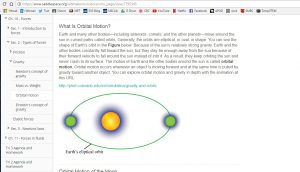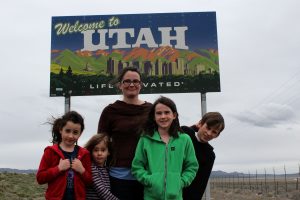I looked at the evolved role of technology in the 2017 classroom. We probed the experience of two teachers’ view of “technology in the classroom” as a journey from student to experienced teaching professional. We finished with their vision of the “future of e-learning”. Teacher J has been teaching high school chemistry and junior science for 13 years. She was interviewed in her room during her last period prep block. Teacher C has been teaching high school ICT for 22 years. He was interviewed in a nearby preparation room while his class worked on something. Both teachers grew up and teach within the BC education system.
Theme 1: Technology as Enhancement. Both teachers remember their 1980-1990’s student and pre-service teaching experience of technology as not present in the classroom or things that enhanced existing practice.
As students…
Teacher C: “[Computers] were used to replacing handwriting or manual typing.”
Teacher J: “Technology was wasn’t a big part of the high school classroom…the overhead projector was the technology of the classroom.”
Teacher C: “When I was in grade 11…I learned programming, but that was outside of the classroom.”
As pre-service teachers…
Teacher J: “In [2003] my B.Ed…the integration of technology was not a big part. There was no push for technology, implicit or explicit.”
Teacher C: “There was nothing [in 1995]. The web didn’t exist. There was just the internet. The expectation was that we would use the computers for research…to make things look nice. It was ‘let’s replace manual technology with digital technology.’”
Theme 2: Exploiting the Affordances of Technology. In their current practice, both teachers have obviously undertaken significant professional development and both understand and extensively exploit the affordances of digital technology and Web 2.0 including LMS (i.e. Google Classroom, WordPress), collaborative documents (i.e. Google Docs, Github, Wikispaces), online formative assessment tools (i.e. Kahoot, Poll Everywhere), data collection systems (i.e. Vernier Probes), visualization tools (i.e. PheT, Canva), cloud-based tutorials (i.e. Khan Academy), and digital storytelling (Youtube).
Teacher C: “[Technology] is any device that allows you to do work either easier, or makes the job easier or more effective.”
Teacher J: “I let my students use their cellphones to text in their answers using online polling software. Students really enjoy that…it is engaging for them.”
Teacher C: “[the students] collaborate, they co-create, they co-edit, they develop what they need to develop socially, together.”
Teacher J: “When we were doing labs, students were recording the chemical reactions, making a time lapse video, and adding a link to their lab report. I was able to go and see their reaction.”
Theme 3: Bleeding Edge Issues For Learning 2.0 When asked about leveraging technology in our digital classrooms of the future, both teachers identified reliable access inside the classroom as the biggest issue.
Teacher C: “The road blocks I run into are when I want kids to work together and something won’t let them. Invariably that turns out to be institutional restrictions.”
Teacher J: “I think technology is an integral part of the classroom now. I’ve done many things with bring your own technology…I think that’s the future. Teachers are requiring technology in their classroom, and they don’t have it. Access is important for us, I think.
Teacher C: “I want technology that works as well in school as it does out of school. Everyone else uses technology for a million things in their life outside of the building. I want a technology that lets us do the same thing inside [the building]…not a completely parallel set of tools, but that the needs are met for both groups and you only need to use one of [the tools].”


